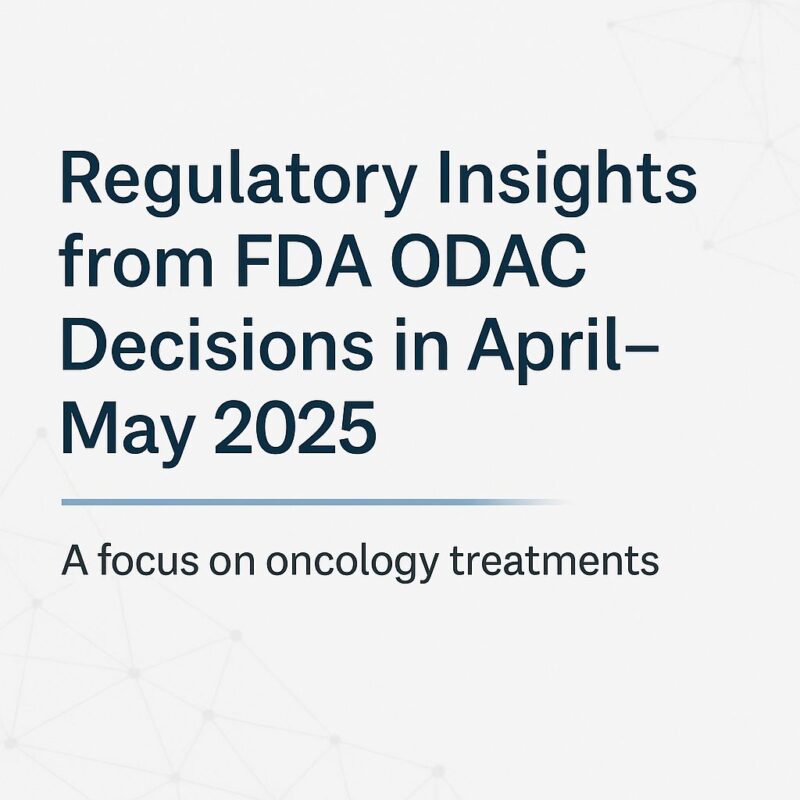
Aakash Desai: A summary of ‘What Biopharma Should Learn’
Aakash Desai, Assistant Professor and Associate Director of Phase 1 and Precision Oncology Program at the UAB O’Neal Comprehensive Cancer Center, shared a post on LinkedIn:
“FDA ODAC Decisions in the past few weeks have been very informative!
Let’s talk about “What Biopharma Should Learn”! Here’s a summary of valuable regulatory lessons:
1) Talazoparib plus Enzalutamide (Pfizer) for mCRPC (All-Comers).
ODAC: 8–0 Against Approval.
- Benefit driven by HRR-mutated subgroup.
- No formal statistical plan for non-HRRm group.
- Safety concerns without offsetting benefit.
Lesson: Indication expansion requires prespecified subgroup justification and efficacy across full population. Toxicity without clear benefit weakens the case.
2) UGN-102 (UroGen) for LG-IR NMIBC.
ODAC: 4–5 Against Approval.
- Single-arm design (ENVISION) lacked comparator.
- ATLAS trial terminated early.
Lesson: For recurrent, non-lethal conditions, comparative data is essential. Single-arm studies carry regulatory risk unless in ultra-rare diseases.
3) Glofitamab plus GemOx (Genentech) for R/R DLBCL.
ODAC: 8–1 Against Applicability to U.S. Population.
- STARGLO trial showed efficacy, but North American subgroup lacked benefit.
- Only 9% U.S. enrollment; prognostic imbalances.
Lesson: Global trials must include representative U.S. cohorts. Regional disparities undermine applicability—FDA needs U.S.-relevant data.
4) Daratumumab SC (Janssen) for High-Risk Smoldering Myeloma.
ODAC: 6–2 In Favor of Approval.
- AQUILA trial showed PFS benefit vs. observation.
- Tolerable safety, neutral QoL.
Lesson: In early/pre-malignant conditions, delay in progression can justify approval—if supported by strong prospective data in clearly defined high-risk groups.
Cross-Cutting Takeaways for Biopharma.
- Predefine and power subgroup analyses—don’t extrapolate post hoc.
- Prioritize RCTs and real-world relevance—especially for the U.S.
- Single-arm trials are fragile—use them strategically.
- Target the right population—clinical and biomarker precision matters.
- Be proactive with FDA—especially when your trial hinges on population nuances.
These decisions are a timely reminder: great science must meet rigorous, patient-representative regulatory standards. Designing trials with FDA strategy in mind is essential.”

More posts featuring Aakash Desai.
-
Challenging the Status Quo in Colorectal Cancer 2024
December 6-8, 2024
-
ESMO 2024 Congress
September 13-17, 2024
-
ASCO Annual Meeting
May 30 - June 4, 2024
-
Yvonne Award 2024
May 31, 2024
-
OncoThon 2024, Online
Feb. 15, 2024
-
Global Summit on War & Cancer 2023, Online
Dec. 14-16, 2023
